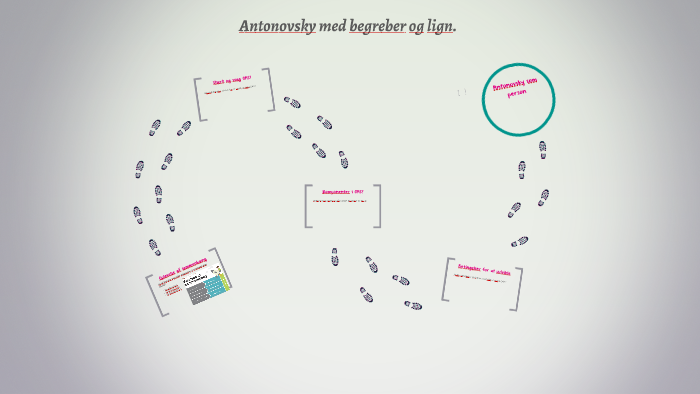

The interesting question stated by Antonovsky was therefore what explains movement toward the health end of the ease/dis-ease-continuum? His answer to this salutogenic question was formulated in terms of sense of coherence (SOC) and generalized resistance resources (GRR) and specific resistance resources (SRR). The important point is to focus on what moves an individual toward the ease-pole of the continuum, regardless of where he/she was initially located with a focus on what promotes health, well-being, and quality of life. We are all more or less ill or well at any given point in time and consequently positioned on different places on this health continuum during the life course. One of Antonovsky’s deviations from pathogenesis was to reject the dichotomization into categories of sick or well and instead understand health as an ease/dis-ease continuum a horizontal line between total absence of health (H−) and total health (H+) (Fig. Salutogenesis focuses on what are the sources for people’s resources and capacity to create health as distinct from, and yet a complementary perspective to pathogenesis, focusing on risk for disease, which traditionally had been the leading focus in research. KeywordsĪron Antonovsky introduced the key concept of sense of coherence as part of the salutogenic model in the book Health, Stress and Coping in 1979.
#Antonovsky soc how to#
The salutogenic approach may promote a healthy orientation toward helping the patient to cope with everyday stressors and integrate the effort regarding how to help the patient manage to live with disease and illness and promote quality of life.

It also briefly discusses the implications of using salutogenesis in health care services and the importance of implementing this perspective in meeting with different patient groups. It gives a brief overview of empirical research of the role of sense of coherence in association with mental health and quality of life and also on sense of coherence in different patient groups including nursing home residents, patients with coronary heart disease, diabetes, cancer, and mental health problems. This chapter presents the measurement of the sense of coherence and the validity and reliability of the 13-item scale. Antonovsky developed an instrument named Orientation to Life Questionnaire to measure the sense of coherence which exists in two original versions: a 29-item and a 13-item version.

Through this mechanism, the sense of coherence helps determine one’s movement on the health ease/dis-ease continuum. A strong sense of coherence helps the individual to mobilize resources to cope with stressors and manage tension successfully with the help of identification and use of generalized and specific resistance resources. The salutogenic model posits that sense of coherence is a global orientation, where life is understood as more or less comprehensible, meaningful, and manageable. This chapter introduces the concept of sense of coherence which is a core concept in the salutogenic model defined by Aron Antonovsky.


 0 kommentar(er)
0 kommentar(er)
